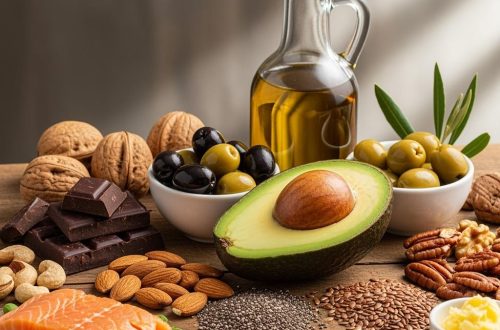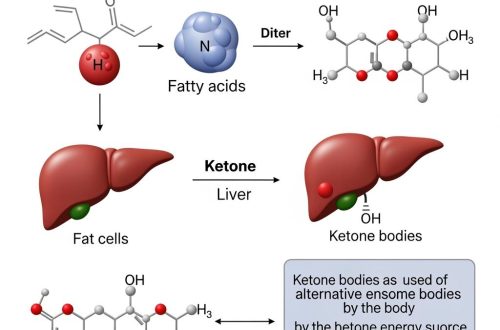10 Key Tips for Success on the Keto Diet
The ketogenic diet has transformed from a therapeutic approach for epilepsy into one of the most popular dietary strategies for weight loss and metabolic health. Unlike traditional low-fat diets, keto emphasizes high fat, moderate protein, and very low carbohydrate intake. This metabolic shift forces your body to burn fat for fuel instead of glucose, a state known as ketosis.
While the science behind keto is solid, many newcomers struggle with implementation. Below are ten evidence-based strategies to help you succeed on your ketogenic journey.
1. Understand the Basics Before Starting
The ketogenic diet typically follows a macronutrient ratio of approximately 70-80% fat, 15-25% protein, and just 5-10% carbohydrates. This usually translates to consuming fewer than 50 grams of carbs daily—sometimes as low as 20 grams for strict adherence.
Before starting, take time to educate yourself about which foods align with these macronutrient goals. Study food labels, learn about hidden carbs, and understand the difference between total and net carbs (total carbs minus fiber). Many keto beginners make the mistake of jumping in without proper preparation, leading to frustration and early abandonment.
Dr. Stephen Phinney, a pioneer in ketogenic diet research, notes that “nutritional ketosis is a well-formulated approach, not simply a matter of cutting carbs.” Understanding the science behind ketosis—including the initial adaptation period and potential side effects—will prepare you mentally for the journey ahead.
2. Prepare Your Kitchen for Success
Environmental cues strongly influence eating behaviors. A kitchen stocked with carb-heavy snacks and processed foods creates unnecessary temptation, especially during the challenging initial adaptation phase.
Before beginning keto, conduct a thorough pantry purge. Remove high-carb items like cereals, pasta, rice, bread, sugary condiments, and processed snacks. Replace them with keto-friendly staples:
- Healthy fats: Olive oil, coconut oil, avocado oil, butter, ghee
- Quality proteins: Eggs, meat, poultry, fish
- Low-carb vegetables: Leafy greens, cruciferous vegetables, zucchini
- Nuts and seeds: Almonds, macadamias, flax seeds, chia seeds
- Full-fat dairy: Cheese, heavy cream, plain Greek yogurt (if tolerated)
- Berries: Small amounts of blackberries, raspberries, and strawberries
Having these foods readily available makes adhering to keto significantly easier, especially during the first few weeks.
3. Plan Your Meals
Meal planning is crucial for keto success. Without preparation, you’re more likely to reach for convenient, carb-heavy options when hunger strikes. Dedicate time each week to plan meals, create shopping lists, and prepare food in advance.
Batch cooking is particularly helpful—prepare large portions of keto-friendly meals and store them for easy access throughout the week. Simple strategies include:
- Cooking extra protein at dinner for the next day’s lunch
- Preparing egg muffins for quick breakfasts
- Washing and chopping vegetables for easy meal assembly
- Making homemade dressings and sauces without added sugars
Many successful keto dieters prepare 3-4 different meals weekly and rotate through them, reducing decision fatigue while maintaining variety.
4. Monitor Your Electrolytes
One of the most common reasons people struggle with keto is electrolyte imbalance. When you reduce carbohydrates, your body excretes more sodium, potassium, and magnesium—essential minerals needed for proper hydration, muscle function, and energy production.
Insufficient electrolytes can lead to the “keto flu,” characterized by headaches, fatigue, muscle cramps, and irritability. To prevent these symptoms:
- Sodium: Add salt to your food or drink bone broth daily (aim for 3,000-5,000mg sodium)
- Potassium: Consume avocados, mushrooms, and leafy greens (aim for 1,000-3,500mg potassium)
- Magnesium: Include nuts, seeds, and leafy greens, or consider a high-quality supplement (aim for 300-400mg magnesium)
Many keto dieters find that proper electrolyte management eliminates most adaptation symptoms and improves overall energy and performance.
5. Track Your Macros (At Least Initially)
While some people can maintain ketosis through intuitive eating, most beginners benefit from tracking macronutrients. Using a food tracking app helps you understand serving sizes and macronutrient composition, preventing the common mistake of consuming hidden carbs.
Tracking doesn’t need to be permanent—think of it as training wheels. After several weeks of consistent tracking, you’ll develop a better understanding of portion sizes and food composition, making intuitive keto eating more feasible.
Pay particular attention to:
- Portion sizes of nuts and cheese (calorie-dense foods)
- Hidden carbs in sauces, spices, and packaged foods
- Protein content of meals (both too little and too much can be problematic)
Most successful keto practitioners find that 2-3 months of tracking creates sufficient awareness for long-term success.
6. Prioritize Whole Foods Over Keto Products
The market is flooded with “keto-friendly” products—from cookies and bars to bread and pasta alternatives. While these can occasionally help satisfy cravings, they often contain questionable ingredients, artificial sweeteners, and fillers that may stall progress or trigger inflammation.
Focus your diet on whole, minimally processed foods:
- Animal proteins
- Natural fats
- Above-ground vegetables
- Limited amounts of berries, nuts, and seeds
Dr. Eric Westman, director of the Duke Lifestyle Medicine Clinic, advises patients to “eat food that doesn’t need a nutrition label” whenever possible. This approach naturally limits ultra-processed foods while maximizing nutrient density.
7. Manage Your Protein Intake Carefully
Contrary to popular misconception, keto is not a high-protein diet. While adequate protein is essential for preserving muscle mass and proper bodily functions, excessive protein can potentially reduce ketone production through gluconeogenesis (the creation of glucose from protein).
Most individuals do well with 0.6-1.0 grams of protein per pound of lean body mass, depending on activity level and goals. Athletes and strength trainers may require the higher end of this range, while sedentary individuals can stay toward the lower end.
Remember that protein needs are moderate—not minimal. Insufficient protein can lead to muscle loss and metabolic slowdown, particularly during caloric restriction.
8. Develop Strategies for Social Situations
Social gatherings often present challenges for keto dieters. Rather than avoiding social events, develop strategies to navigate them successfully:
- Eat a small, fat-rich meal before attending
- Volunteer to bring a keto-friendly dish to share
- Research restaurant menus in advance
- Focus on protein and vegetable options
- Be prepared with a simple explanation if asked about your food choices
- Sip on sparkling water with lime instead of alcohol or sugary drinks
Many long-term keto dieters find that these situations become easier with practice. The temporary discomfort of declining certain foods diminishes compared to the satisfaction of maintaining your health goals.
9. Incorporate Intermittent Fasting
Intermittent fasting pairs exceptionally well with ketogenic eating. Once fat-adapted, many people naturally experience reduced hunger, making time-restricted eating patterns more comfortable. Common approaches include:
- 16:8 method: Eating within an 8-hour window (e.g., 11am-7pm)
- OMAD (One Meal A Day): Consuming all daily calories in a single meal
- 5:2 approach: Eating normally five days per week with two modified fasting days
Studies suggest that combining keto with intermittent fasting may enhance ketone production, improve insulin sensitivity, and accelerate fat loss. However, this approach should be implemented gradually after becoming comfortable with basic ketogenic eating.
Dr. Jason Fung, a nephrologist and fasting expert, notes that “fasting and keto are complementary strategies that address the same underlying issue of insulin resistance from different angles.”

10. Focus on Overall Health, Not Just Macros
While macronutrient ratios are important for achieving ketosis, they’re only part of the picture. For sustainable results, consider:
- Sleep quality: Poor sleep increases stress hormones and undermines metabolic health
- Stress management: Chronic stress can elevate blood sugar and impede weight loss
- Physical activity: Regular movement improves insulin sensitivity and metabolic flexibility
- Micronutrients: Focus on nutrient-dense foods to prevent deficiencies
- Gut health: Include fermented foods and fiber sources as tolerated
The most successful keto practitioners view their diet as part of a comprehensive health strategy rather than an isolated intervention.
Conclusion
The ketogenic diet offers numerous potential benefits, from weight management to improved metabolic health. However, successful implementation requires knowledge, preparation, and consistency.
By understanding the principles outlined above and applying them consistently, you can navigate common pitfalls and create a sustainable approach to ketogenic eating. Remember that individual responses vary—what works for one person may need adjustment for another.
With proper preparation and realistic expectations, the ketogenic diet can be a powerful tool in your health toolkit. Start with a solid foundation of knowledge, prepare your environment for success, and approach the process with patience and curiosity.





